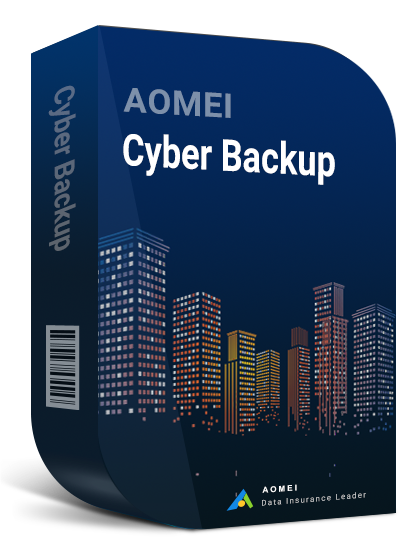The Critical to Backup Hyper-V
Hyper-V backups serve several essential purposes:
- Disaster recovery: Protection against hardware failures, natural disasters, or ransomware attacks.
- Data integrity: Safeguarding against accidental deletions or corruptions.
- Compliance: Meeting regulatory requirements for data retention.
- Operational flexibility: Enabling testing, development, and rollback scenarios.
Without proper backups, organizations risk significant downtime, data loss, and potential financial impacts.
Things to Know Before Backup Hyper-V VMs
Before implementing your Hyper-V backup solution, understanding these key factors will help you avoid data loss, performance issues, and recovery failures.
Understand Your Backup Levels
Host-level (recommended):
Backs up entire VMs from the Hyper-V host.
Faster, less intrusive to running VMs
Doesn’t guarantee application consistency without VSS
Guest-level:
Runs inside the VM like a physical machine backup
Better for application-aware backups (SQL, Exchange)
More resource-intensive on VM performance
Choose Between Online vs Offline Backups
Online (hot) backups:
VMs remain running during backup
Requires a Hyper-V VSS writer for consistency
Preferred for production environments
Offline (cold) backups:
VMs are shut down during backup
Guarantees data consistency
Causes downtime – only for non-critical VMs
3 Methods for Hyper-V Backup Solution
Method 1: Windows Server Backup (Built-in)
Step 1. If you have not installed Windows Server Backup, install it first.
Step 2. Go to Start Menu > Windows Administrative Tools > Windows Server Backup.
Step 3. Click Backup Schedule (for automated) or Backup Once (for manual). Choose Custom to select specific VMs. Then select Hyper-V or browse to VM files to add items.
Step 4. Select an external drive, network path, or dedicated storage to set the destination.
Step 5. Select the VSS full backup for application consistency.
Step 6. Click Backup Now or wait for the scheduled job.
Restore Process:
Open Windows Server Backup > Recover.
Select a backup location and date.
Choose Hyper-V and restore the entire VM or files.
Method 2: PowerShell (Export-VM)
Step 1. List All VMs
Step 2. Export a VM
Step 3. Compress Backup
Restore Process:
Method 3. AOMEI Cyber Backup & Restore (Enterprise)
AOMEI Cyber Backup is a professional backup and disaster recovery solution designed for Hyper-V. It offers agentless VM backup, centralized management, and flexible recovery options, making it suitable for businesses of all sizes.
- Agentless VM Backup – No need to install software inside VMs.
- Centralized Management – Manage backups for multiple Hyper-V hosts from a single console.
- Automated Backup & Scheduling – Set up daily, weekly, or incremental backups.
- Flexible Storage Options – Back up to local disk, NAS, network shares, or cloud storage.
- Instant Recovery – Quickly restore entire VMs or individual files.
- Perpetual Free – You can use AOMEI Cyber Backup Free Edition with no time limit.
Quick Steps to configure Hyper-V VMs backup
Step 1. Navigate to Source Device > Hyper-V > + Add Hyper-V to add a host, and click … > Bind Device.
Step 2. Navigate to Backup Task > + Create New Task, and specify the Task Name, Backup Type, Target, and Schedule.
- Device: Select the VMs on the host you want to back up.
- Target: Select to back up to a local path or a network path.
- Archive: To add an Amazon S3 bucket and archive backup versions to the S3 storage.
- Schedule: Create a backup schedule to perform full or incremental backups, and automate execution daily, weekly, or monthly according to the frequency you specified.
Step 3. Click Start Backup, and you can select to Add the schedule only, or Add the schedule and start backup now.
Restore Process:
Navigate to Backup Management > History Versions and select the VM and restore point you want to restore to, click … > Restore, and you can restore the entire VM to a usable state quickly and easily.
Then click Start Restore to perform the VM recovery.
Best Practices for Hyper-V Backups
✅Test restores monthly – Ensure backups are usable.
✅Follow 3-2-1 rule – 3 copies, 2 media types, 1 offsite.
✅Use CBT (Changed Block Tracking) – Faster incremental backups.
✅Encrypt backups – Protect against ransomware.
✅Monitor backup jobs – Alerts for failures.
Conclusion
Implementing a comprehensive Hyper-V backup strategy is critical to protecting your virtual infrastructure. By understanding the backup methods and best practices, you can ensure business continuity and rapid recovery when needed. Whether you use a built-in tool or an enterprise backup solution, the key is to design a backup methodology that meets your recovery goals and business requirements.



